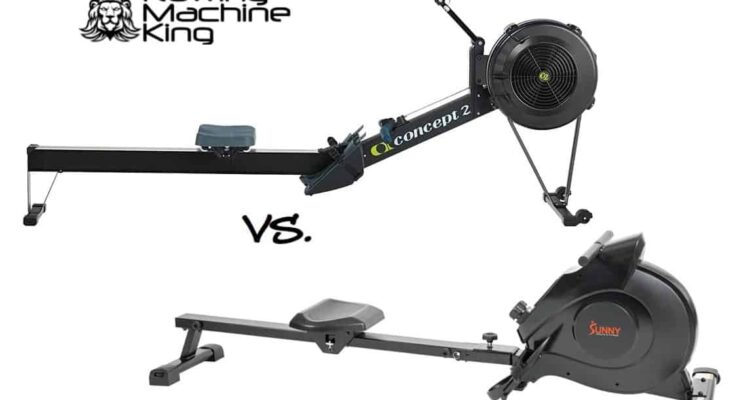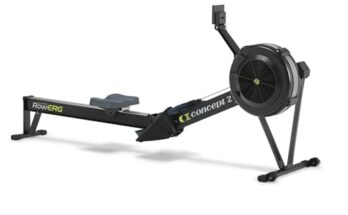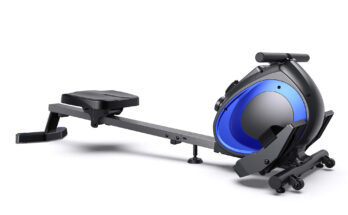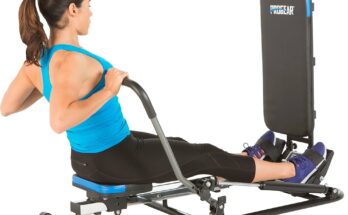Choosing the right rowing machine can feel like a daunting task. You’re standing at a crossroads: water rower, air rower, or magnetic rower?
Each option offers unique benefits, but which one is perfect for you? As you dive into this article, you’ll discover the secrets behind these machines. You’ll learn how they can transform your workout routine and optimize your fitness goals. Imagine a rowing experience tailored just for you, where every stroke brings you closer to your ideal health.
Stick around, and find out which rower can become your personal ally in the pursuit of a healthier, stronger you.
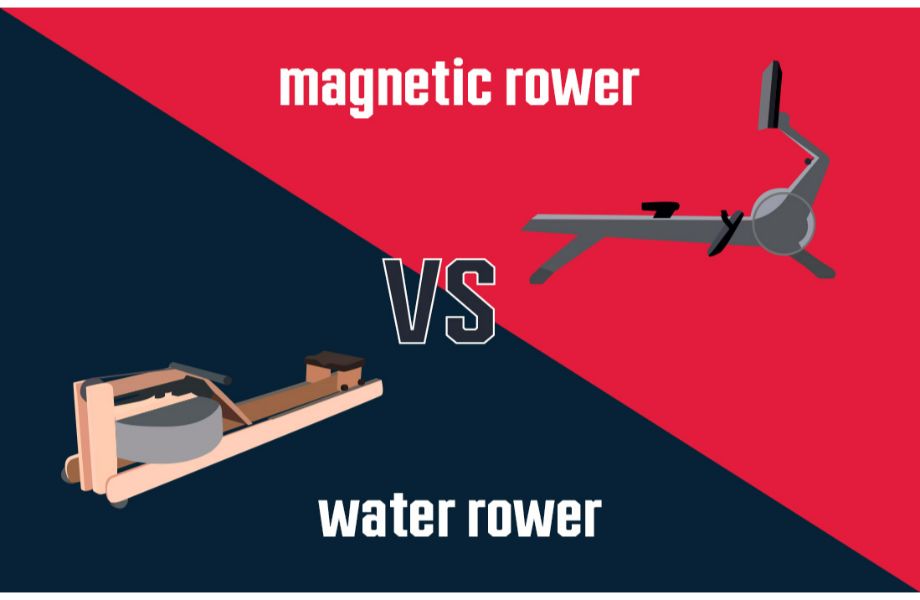
Water Rowers
Water Rowersoffer a unique rowing experience that mimics the soothing sounds and dynamic resistance of actual water rowing. If you’ve ever paddled across a serene lake, you’ll appreciate the authentic feel that water rowers bring to your workout routine. They are perfect for those who value realism and a connection to nature while exercising.
Mechanism And Resistance
Water rowers use a tank filled with water to create resistance. As you pull the handle, the paddles inside the tank move through the water, generating a smooth resistance that increases with your rowing speed. This mechanism naturally adjusts to your pace, providing an experience that closely resembles rowing on water. Unlike other rowers, the sound of water swishing adds to the immersive workout experience.
Pros And Cons
Pros:
- Realistic rowing sensation with natural resistance.
- Quiet operation compared to air rowers.
- Aesthetic design that fits well in home environments.
Cons:
- Can be bulky and require more space.
- Higher maintenance due to the water tank.
- Typically more expensive than air or magnetic rowers.
Ideal Users
Water rowers are ideal for those who love the authentic rowing experience and the calming sound of water. If you’re someone who enjoys a workout that feels close to nature, this might be the perfect match. It’s also a great choice if you’re looking for a quieter machine, especially if you live in a shared space. Picture yourself rowing on a calm lake; that’s the experience water rowers aim to replicate.
Have you ever considered how the ambiance of your workout environment affects your motivation? Choosing a water rower might just be the serene escape you need to stay committed to your fitness journey.
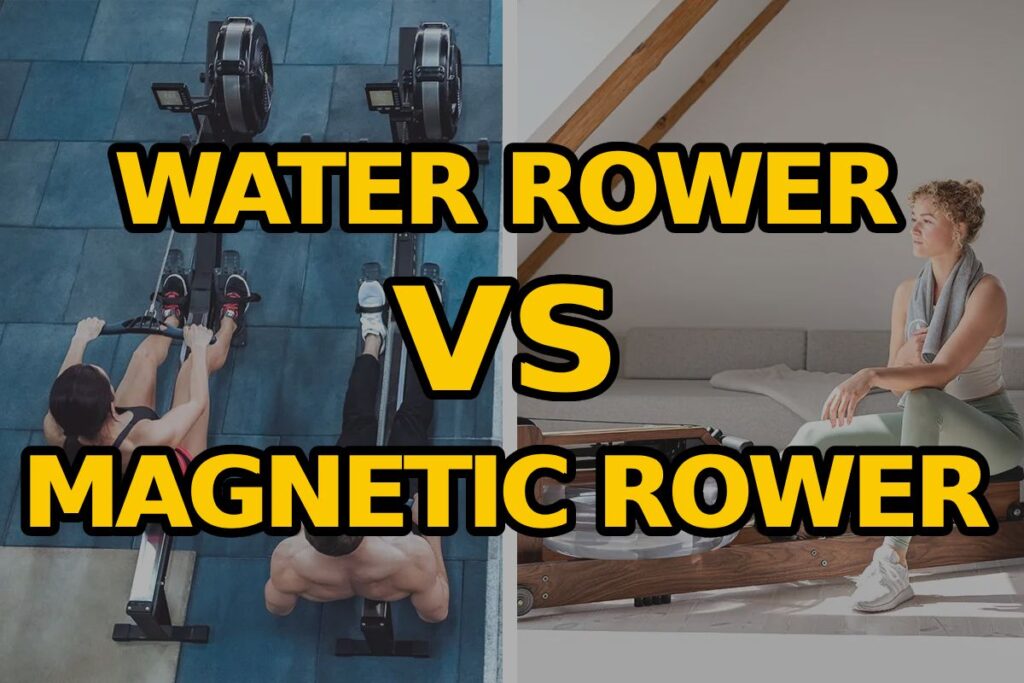
Air Rowers
Water rowers mimic the feel of real rowing with water resistance. Air rowers use fan-based resistance, adjusting with speed. Magnetic rowers offer quieter operation with adjustable magnetic resistance. Each type provides unique benefits for different rowing experiences.
Air rowers have gained popularity among fitness enthusiasts. They offer a unique rowing experience. These machines use air resistance, which mimics the feel of rowing on water. Let’s dive deeper into the mechanics, advantages, and suitable users for air rowers.Mechanism And Resistance
Air rowers use a flywheel to create resistance. As you pull the handle, the flywheel spins. This spinning pushes air through the machine. The harder you row, the more resistance you feel. This offers a dynamic workout. It adjusts naturally to your effort.Pros And Cons
Air rowers provide a smooth rowing experience. They are often used in competitive training. The resistance is unlimited. It’s based on your rowing speed. But, they can be noisy. The fan can make a lot of sound. They also require more space. The design is usually larger than other rowers.Ideal Users
Air rowers suit those seeking an intense workout. They are great for athletes and competitive rowers. They also fit those who enjoy a challenging exercise. Beginners may find the noise distracting. But, with regular use, many grow accustomed to it.Magnetic Rowers
Magnetic rowers offer a smooth and quiet workout experience. They differ from water rowers, which mimic real rowing, and air rowers, known for their variable resistance. Ideal for home use, magnetic rowers provide consistent resistance and require less maintenance.
Magnetic rowers offer a smooth and quiet rowing experience. They are popular for home gyms due to their silent operation. These rowers use a magnetic brake system to create resistance. This makes them ideal for apartments or shared living spaces. The ability to adjust resistance easily makes them versatile for workouts. Users enjoy the consistent feel of each stroke, which aids in building endurance.Mechanism And Resistance
Magnetic rowers use magnets to control resistance. The magnetic brake system allows for smooth transitions. Resistance levels can be adjusted with a simple knob or digital control. Unlike air rowers, they don’t rely on airflow. This results in a quieter workout session. The resistance remains constant, providing a steady workout pace.Pros And Cons
Magnetic rowers have several benefits. They are quieter than other types of rowers. This makes them perfect for indoor environments. Adjusting resistance is easy and can be done mid-workout. This allows for varied intensity levels. On the downside, they may not simulate real rowing as well as air rowers. The smooth resistance might lack the dynamic feel of water rowers.Ideal Users
Magnetic rowers suit beginners and casual users. Those who prefer a quiet workout environment will benefit most. They are great for people with limited space. Adjustable resistance makes them suitable for different fitness levels. They cater to users seeking a consistent and controlled workout. Perfect for anyone prioritizing ease of use and maintenance.Performance Comparison
Choosing the right rowing machine can be a game-changer for your fitness journey. Whether you’re aiming to lose weight, build muscle, or improve cardiovascular health, the type of rower you select impacts your workout experience. Let’s dive into a performance comparison of water rowers, air rowers, and magnetic rowers. Understanding how they differ in resistance, noise, and maintenance can help you make a more informed decision.
Resistance Levels
Resistance is key to how challenging your workout can be. Water rowers use water tank levels to create a natural, smooth resistance. You can feel like you’re rowing on a real lake. Increasing the water in the tank increases the resistance, giving you control over your workout intensity.
Air rowers, meanwhile, rely on a flywheel that spins faster the harder you pull. This means resistance automatically increases with your effort. It’s great for high-intensity workouts, but can be less predictable if you like a steady rhythm.
Magnetic rowers offer adjustable resistance levels through magnets. You can easily set your preferred difficulty before starting your session. They give you precise control over resistance, making them ideal for structured workouts. Which resistance style appeals to you the most?
Noise Levels
Noise can be a deal-breaker if you live in a shared space or enjoy a quiet workout environment. Water rowers emit a soothing, rhythmic splash that many users find calming. The sound mimics rowing on a real body of water, adding to the immersive experience.
Air rowers, on the other hand, can be quite loud. The spinning flywheel generates considerable noise, similar to a fan. If you’re someone who prefers peace, this might not be your best choice.
Magnetic rowers are the quietest of the bunch. The magnets create minimal noise, allowing for a silent workout. You can row while watching TV or listening to music without disturbance. Would silence enhance your workout experience?
Maintenance Needs
All fitness equipment requires some level of upkeep. Water rowers need occasional water changes and treatment to prevent algae. It’s a simple task but necessary for maintaining performance and hygiene.
Air rowers demand regular cleaning of the flywheel and chain lubrication. Dust can accumulate on the flywheel, affecting performance. Keeping it clean ensures smooth operation.
Magnetic rowers are low-maintenance. Without a flywheel or water tank, there’s less to worry about. A wipe-down after use and periodic checks of the resistance mechanism suffice. How much time are you willing to spend on maintenance?
Each rower type offers unique benefits and drawbacks. Consider your preferences and needs to choose the one that aligns best with your fitness goals and lifestyle. Which rower do you feel would best support your journey to better health and fitness?
User Experience
Choosing between water, air, and magnetic rowers affects user experience. Water rowers provide a soothing, natural resistance. Air rowers offer dynamic, adjustable resistance with every stroke. Magnetic rowers deliver quiet, consistent resistance, ideal for home use. Each type offers unique benefits for diverse rowing preferences.
When choosing between a water rower, an air rower, and a magnetic rower, the user experience is a critical factor to consider. Your time on the rower should be enjoyable and productive, ensuring that each session brings you closer to your fitness goals. Understanding the differences in comfort, technology, and overall experience can help you make an informed decision.Comfort And Ergonomics
Comfort is key when you’re spending time on a rowing machine. Water rowers often mimic the feel of rowing on actual water, offering a smooth and fluid motion. The sound of water can be soothing, making your workout more pleasant. Air rowers provide a responsive workout with variable resistance, but they can be noisy. This might be distracting if you’re trying to focus or if you’re in a shared space. Magnetic rowers, on the other hand, are known for their silent operation. If you prefer a quiet workout, this might be the best choice. However, some users find the rowing experience less dynamic compared to water and air rowers.Technology And Features
Rowing machines today come with various tech features that enhance your workout. Water rowers may offer basic monitors showing time, distance, and speed. They’re straightforward and easy to use, making them ideal if you’re not tech-savvy. Air rowers often come with more advanced displays, providing detailed metrics such as stroke rate and calories burned. They can sometimes connect to apps, allowing you to track your progress over time. Magnetic rowers usually lead in technology, often equipped with interactive screens and connectivity options. You might enjoy virtual rowing sessions or customized workouts. However, with more features comes a learning curve, so be prepared to spend some time getting familiar with the setup. Which of these features matter most to you? Consider what will keep you motivated and engaged. Your ideal rower should align with your personal preferences and fitness goals.Cost And Value
Choosing the right rowing machine involves understanding cost and value. Each type—water, air, and magnetic—offers unique benefits and price points. Balancing initial investment and long-term costs can help in making an informed decision. Let’s explore the financial aspects of these rowers.
Initial Investment
Water rowers often have higher initial costs. Their natural resistance and aesthetic design appeal to many users. Air rowers usually come at a mid-range price. They provide consistent resistance and are popular in gyms. Magnetic rowers are often the most affordable. They are quiet and suitable for home use.
Consider your budget and rowing preferences. This will guide your initial purchase. Balancing your needs with your budget ensures satisfaction with your choice.
Long-term Costs
Water rowers require occasional water treatment and maintenance. This keeps them functioning well over time. Air rowers need regular cleaning to prevent dust build-up. They generally have fewer maintenance costs. Magnetic rowers have minimal moving parts. They usually incur the least maintenance costs.
Think about the long-term expenses of your chosen rower. Factor in the maintenance and potential repairs. This will help you evaluate the true value of your investment. A well-maintained rower lasts longer and offers more value over time.
Choosing The Right Rower
Water rowers offer a realistic rowing experience with smooth resistance. Air rowers adjust resistance based on your rowing speed. Magnetic rowers provide quiet and consistent resistance, ideal for home use. Each type suits different preferences and needs, making it essential to choose wisely.
Choosing the right rower can be a game-changer for your fitness journey. Whether you’re eyeing a water, air, or magnetic rower, each has unique features that cater to different needs. Your choice will depend on several factors, including your fitness goals, available space, and budget. Let’s dive into these aspects to find the best fit for you.Fitness Goals
Think about what you want to achieve with your rower. Are you aiming to build muscle, lose weight, or improve endurance? Water rowers offer a smooth, realistic rowing experience, ideal for full-body workouts. Air rowers are perfect for high-intensity interval training with their dynamic resistance. Magnetic rowers provide a quieter, more controlled workout, making them great for steady-state cardio. Understanding your fitness goals will guide you in selecting a rower that aligns with your aspirations. A friend of mine chose a magnetic rower because she wanted a peaceful workout session while her baby napped. What are your workout conditions like?Space And Storage
Where will you place your rower? Not all rowers are space-friendly. Water rowers can be bulky due to their water tanks. Air rowers, while offering great workouts, often have long frames. Magnetic rowers are typically more compact and easier to store. If space is tight, consider a foldable model. I once squeezed a magnetic rower into my studio apartment because it folded neatly into a closet. How much space can you dedicate to your rower?Budget Considerations
How much are you willing to spend on a rower? Water rowers tend to be on the pricier side because of their sophisticated design. Air rowers offer a range of prices, with some affordable options available. Magnetic rowers generally sit in the mid-range, offering good value for money. Prioritize what features matter most to you. A colleague invested in a top-tier air rower for its performance data tracking, which was crucial for his training. What features are must-haves for you?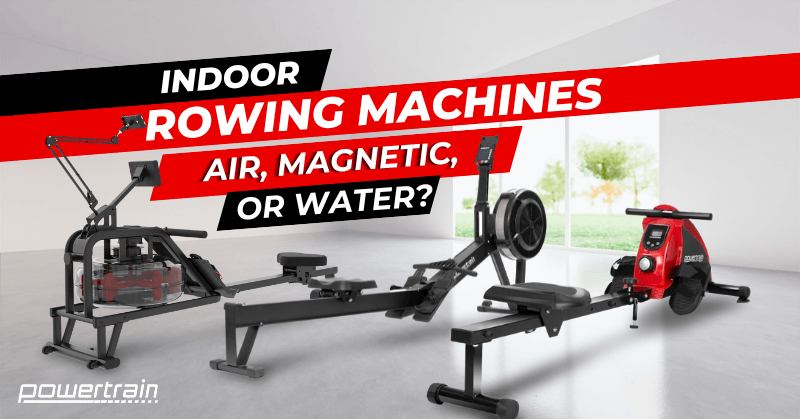
Frequently Asked Questions
Which Rower Is Best For Home Use?
Choosing the best rower depends on your preferences and space. Water rowers offer a realistic feel, but are bulky. Air rowers provide adjustable resistance and are usually more affordable. Magnetic rowers are quiet and compact, making them ideal for home gyms.
Consider your workout goals and space constraints before deciding.
How Does Resistance Differ In These Rowers?
Water rowers use water to simulate natural rowing. Air rowers rely on fan blades for resistance adjustment. Magnetic rowers have magnets creating silent resistance levels. Each type offers a unique rowing experience. Your choice should depend on your preference for noise level and resistance feel.
What Maintenance Do Different Rowers Need?
Water rowers need regular cleaning and water treatment. Air rowers require dusting and occasional fan blade checks. Magnetic rowers demand minimal upkeep, often limited to cleaning. Proper maintenance ensures longevity and optimal performance. Always follow the manufacturer’s guidelines for maintenance practices.
Are Water Rowers Quieter Than Air Rowers?
Water rowers are typically quieter, with a soothing water sound. Air rowers can be louder due to fan noise. Magnetic rowers are the quietest, ideal for shared living spaces. Consider noise levels if you row in a noise-sensitive environment. Each type offers a distinct auditory experience.
Conclusion
Choosing the right rower depends on your fitness goals. Water rowers offer a smooth, realistic rowing experience. Air rowers provide dynamic resistance and are great for intense workouts. Magnetic rowers are quiet and adjustable, perfect for home use. Each type has its unique benefits.
Consider space, noise level, and workout preference. Compare features and decide which suits you best. Rowing boosts cardiovascular health and strengthens muscles. Enjoy a rewarding workout journey. Start rowing and achieve your fitness dreams. Fitness awaits, your choice matters.
